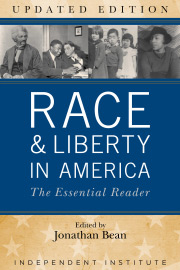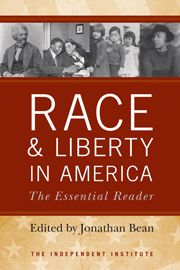In the recent Schuette v. BAMN decision, the U.S. Supreme Court upheld the right of voters to amend the Michigan Constitution by guaranteeing Equal Protection to individuals in state university admission. The Court’s 6-2 majority split in its reasoning, with several justices citing recent decisions upholding “permissible” racial discrimination when the Court deems it acceptable. There is, however, no such “permissibility” language in the Equal Protection Clause of the Constitution.
Since Grutter (2003)—a case involving racial discrimination by the University of Michigan Law School—the Court has accepted the diversity rationale for racial discrimination in higher education. Frustrated Michigan voters then enacted an amendment to mandate nondiscrimination—something the Court should have done in 2003. The Court upheld the Michigan amendment but only in the area of admissions.
In Schuette, Justices Scalia and Thomas point out the legal nonsense of courts dividing the nation into “racial blocs.” They write, “Does a half-Latino, half-American Indian have Latino interests, American-Indian interests, both, half of both?” And what does it mean to say that a “group” has “interests” that may be protected as the Court decides case by case?
Scalia and Thomas are not the first to note the absurdity of group interests in a land of mixed-race individuals. Frederick Douglass had a black mother and white father. Upon marrying a white woman, the Washington Post asked whether doing so hurt the interests of “his” community of black Americans. Douglass retorted that he was neither black nor white but a “member of the one race that God created.”
NAACP lawyers once echoed Douglass’s view by rejecting racial check boxes as violating the color-blind legal approach the group had taken since the early 20th century. Yet, still we have check boxes, now vociferously defended by the NAACP. A brief history of the Census highlights the government’s ever-changing classifications.
Mexican and Puerto-Rican Americans became Spanish-surnamed individuals, then Spanish-Speaking Americans, and finally Hispanics—a category embracing blacks, whites and multiracial mixed individuals. Now we have “Latino,” which, strictly speaking, should include Justices Scalia and Alito but doesn’t.
Examining the 2000 Census, Ben Wattenberg observed, “It has indeed gotten ridiculous. We’re talking ketchup numbers here: The demographers were buzzing that 63 varieties of humanity may now be indicated on the [Census] form. . . .” Wattenberg chose “Human” for himself.
The liberal tradition of civil rights rejects racial grouping as the basis of rights or interests. Only the individual has rights guaranteed protection by the Courts. When the government assigns race to an individual and violates his or her rights, the government acts unconstitutionally.
Voicing this view, Justice John Marshall Harlan, the lone dissenter in the “separate-and-equal” decision of Plessy v. Ferguson (1896), declared that “[o]ur Constitution is color-blind, and neither knows nor tolerates classes among citizens.” Harlan’s view inspired civil rights lawyers on to courtroom victories up to and beyond the Brown decision.
Similarly, writer Zora Neale Hurston asserted the conception of race as nonsensical and dangerous when she wrote: “[T]he word “race” is a loose classification of physical characteristics. It tells nothing about the insides of people. . . . So Race Pride and Race Consciousness seem to me to be not only fallacious, but a thing to be abhorred. It is the root of misunderstanding and hence misery and injustice.”
It is now 2014 and time to return to the civil rights tradition of Douglass, Harlan, Hurston and many others. The Supreme Court should abandon the notion of group interests and uphold the Constitution for all individuals, regardless of race or ethnicity.
In the meantime, voters in all fifty states must do what the Court will now permit—amend their constitutions to mandate nondiscrimination.









